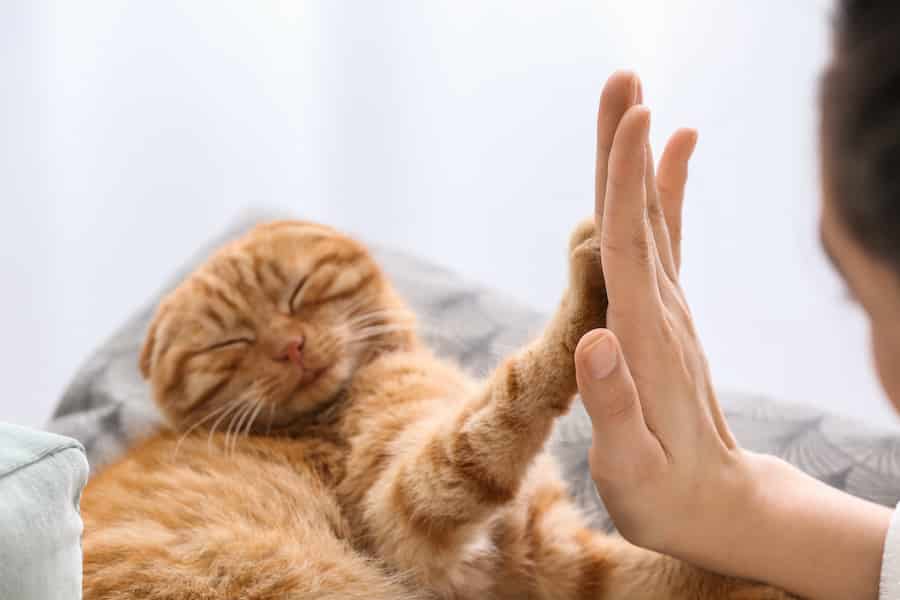In today’s Western society, our cats play a stronger companionship role in our lives that was unheard of forty years ago. Social dynamics have changed as many people lead a more insular existence due to such things as a breakdown of community networks and the rise of the Internet and social media. Pets are now an important member of the modern family unit.
Natural therapies once thought to be only for humans are now becoming increasingly popular with our companion animals. Massage, acupuncture and homeopathy are now being extensively used by our animal friends because they are safe, cost effective and very beneficial.
What is reflexology?
Reflexology, a cross between massage and acupressure, is potentially part of this growing trend. Reflexology is the idea that the outer ears and feet of a person or animal, represent a perfect microcosm or map of the whole body. By touching just the feet, outer ears and face you can have an effect on the whole body. This is because they connect to energy pathways that travel through the body to particular organs, structures or glands.
What are the benefits of reflexology?
Reflexology is a form of therapeutic touch, which can create a deep relaxation response and promote healing in the body. When stress is released, the body’s own natural healing intelligence takes over and brings the body back into a normal state of being. The immune, nervous and hormonal systems are able to function more effectively.
Reflexology can also improve circulation around specific organs as well as general blood and lymph circulation. Dr. Mehmet Oz in his book Healing from the Heart mentions an experiment that showed just massaging the footpads in dogs increased lymphatic drainage in the body. When circulation is improved, blood flows more freely in the body so that nutrients can easily reach cells and waste products can be removed more efficiently.
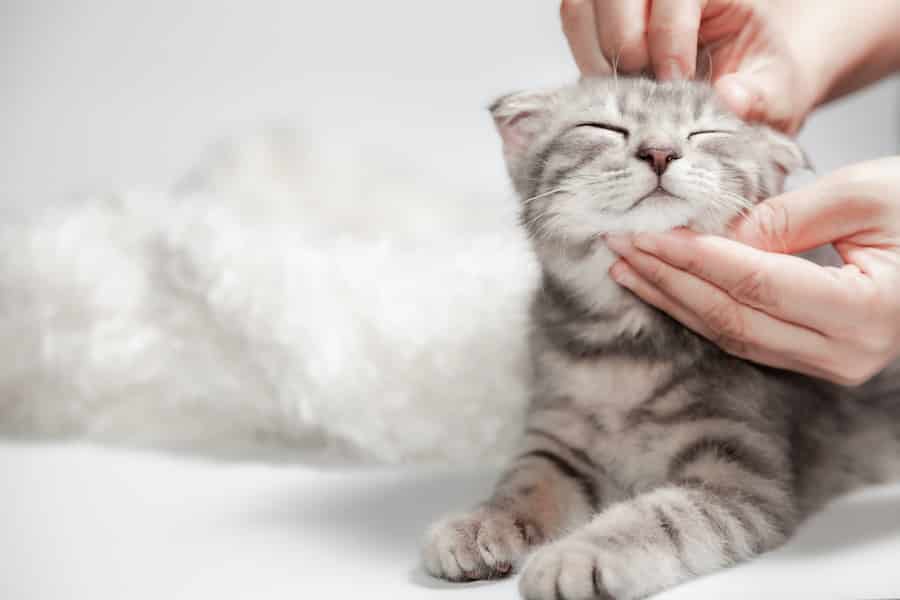
Reflexology and Cats?
As a certified reflexologist and cat lover, I became interested in how reflexology could be applied to our companion animals. The idea that reflexology applies to our pets has not been fully explored although the concept has always been acknowledged. Many holistic animal health experts recommend reflexology. In The Encyclopedia of Natural Pet Care, for example, author C.J. Putotinen notes that “hand and foot reflexology, widely used in humans, has application in dogs and cats, too, for there are important energy points on the paws.” Paw massage is demonstrated on a cat in Dr Michael Fox’s book The Healing Touch.
I began to experiment on my two Burmese cats, Matisse and Morandi when they were kittens and discovered that regular reflexology seemed beneficial for their overall health.
Although I had always stroked Matisse and Morandi’s ears, because of its soothing effect on them, during the course of my research, I came across an ear acupuncture map in Diane Stein’s book The Natural Remedy Book for Dogs and Cats. From this discovery, I concluded that ear reflexology could also be successfully applied to our companion animals. The ear map is based on an inverted kitten passing out of the birth canal, similar to the human ear, which resembles a fetus in the womb. Therefore, the lower part of the body lies nearer to the tip of the ear, and the upper half lies more toward the base of the ear.
The face contains important connections to parts of the body including acupuncture points, meridians (energy channels) and nerve endings. I developed a mini-map, transposing the structure and organs of the body onto the face as well as taking into consideration the meridians that flow through the area.
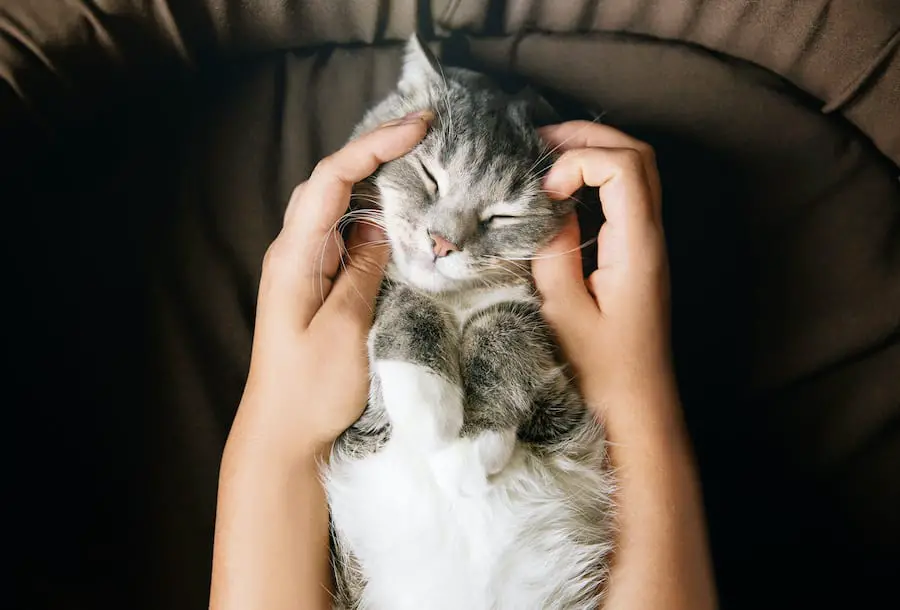
Feeling Skeptical?
Skeptical people have asked me – why should reflexology work on my cat? My reply to this question is – Do we know if reflexology works on people? The answer of course is yes, according to thousands of people who benefit from this modality worldwide. So why wouldn’t it work on animals?
Humans and animals share the same anatomy and physiology (how the body works). We are affected by many of the same health concerns and are treated with many of the same antibiotics and steroids. Animals and humans have identical energy centres and energy pathways (nerve and meridian) throughout the body. We both experience similar emotions and accumulate stress in our daily lives.
From observation, many pet “owners” (cats would hate to think of anyone owning them) unconsciously perform ear, face and paw reflexology. Most people are largely unaware that they are affecting everything in the body through this simple gesture. Stroking the ear may stimulate memories of being licked by their mother. The comfort associated with touching the paws may reconnect them with the sensation of being a kitten, when they would contentedly knead their paws to extract milk when nursing.
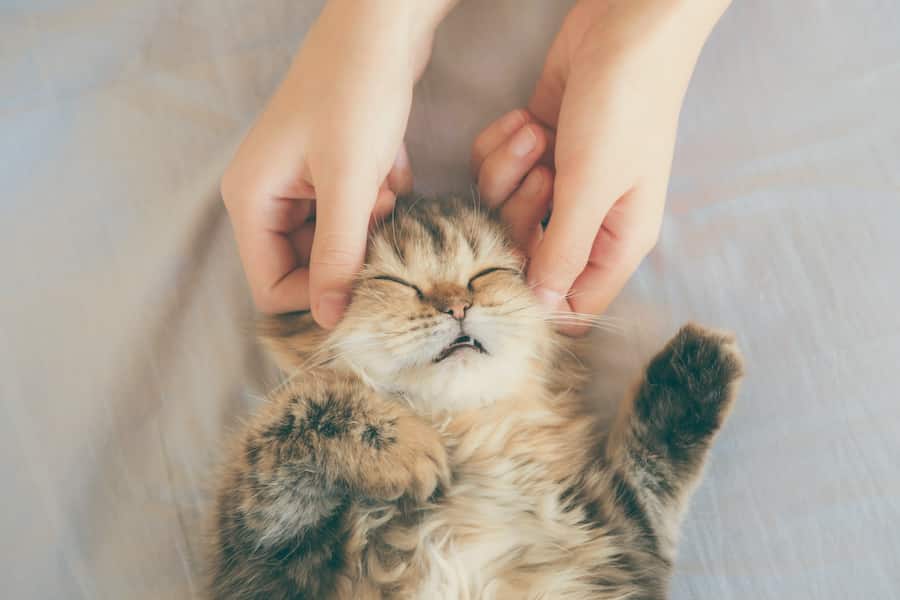
The Need for Animal Reflexology
Pets have a low tolerance for chemicals and toxins in their environment, yet they inhale, ingest, or absorb them on a daily basis. Our feline friends are much smaller than we are and they live closer to the ground so are in more danger. They may be exposed to things we never give a second thought to such as chemicals in household cleaners, plastic food bowls or topical flea products.
Toxins can form in the body as a result of a pet’s diet. The majority of commercial pet food contains preservatives, salt, sugar, and additives such as colouring. Eating this type of food can lead to chronic health conditions, such as diabetes, allergies and kidney failure. Holistic veterinarian Lisa Newman, author of Allergies, estimates that pets eat up to one third of their body weight a year in preservatives and toxins. Therefore, reflexology may prove helpful with cleansing the body of wastes and detoxifying the organs.
Pets also experience stress just like us. Chronic stress is the most common cause of all illness and disease in pets and humans alike. Stress contributes to 85% of all major illnesses and plays a crucial part in nearly every condition that a veterinarian treats. Almost all body functions and organs are affected by stress.
Some people may find this a bit hard to believe. How can my hectic life be compared to an animal that just sleeps, eats and plays? But living with humans can be a stressful experience. Companion animals have a lower threshold of stress than humans do. They are surrounded by sensory stimulation that we largely cannot perceive. Cats are especially sensitive to change and noise. Changes in their household or living environment can be deeply upsetting. Pets also pick up on human stress and emotions.
There is always an energetic and emotional interchange that takes place when you live in close contact with someone. Cats are incredibly sensitive beings that are capable of copying a wide variety of moods and emotions of those people they are especially attached to. This is a phenomenon animal behaviorist Michael Fox calls sympathetic resonance. They are able to observe, decipher and imitate subtle human behavior because they largely rely on non -verbal communication.
Human Stress Affects Pets
Anecdotal reports are emerging that show pets can also develop the same health conditions as their owners. There is convincing evidence that suggests problems such as cystitis, stomach upsets and itchy skin conditions are triggered by emotions. These conditions can be caused in particular, by changes in the animal’s relationships with its human companions.
The whole question of emotions in animals is contentious. Many scientists would argue against animals having emotions. Pet owners and some animal behaviourists would argue that their pets unquestionably have emotions. Cats in particular have received an ill-conceived reputation as being emotionless and aloof; but that supposition couldn’t be further from the truth. Jeffrey Masson, in his book The Nine Emotional Lives of Cats, has identified nine primary emotions- narcissism, love, contentment, attachment, jealousy, fear, anger, curiosity and playfulness.
So just because something is not stressful for us doesn’t mean it’s not stressful for our cats! Stress isn’t always avoidable, but natural therapies, like reflexology, act as ways to diffuse tension and promote relaxation.
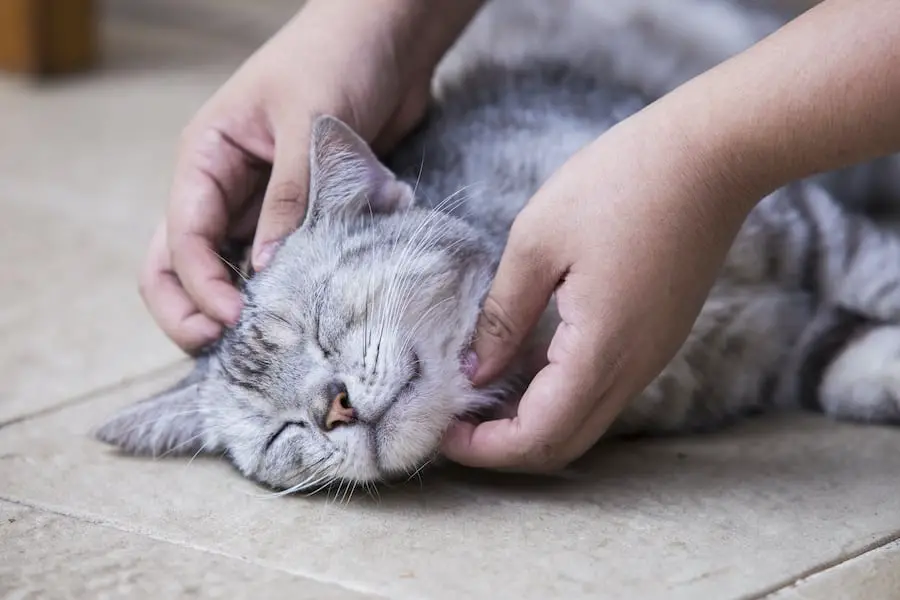
Creating Meaningful Connections with our Pets
What better way to deepen our connection with our cats than with touch therapies such as reflexology? Nurturing touch communicates at the most basic, non-verbal level, many desires – security, trust, acceptance, comfort, relaxation and unconditional love. These are all feelings that companion animals and humans want in their lives and in their interaction with each other. For cats, allowing us to perform reflexology on their most sensitive areas like the paws and ears is the supreme demonstration of their trust in us.
Reflexology offers a reciprocal exchange of love that is rewarding for both the giver and the receiver. When we offer something like touch therapies to animals, we help rebalance the human-animal bond. As Sally Morgan, a craniosacral therapist who works with animals, believes “ if people are better able to understand animals they gain a better understanding of themselves. Animals are our connection to nature. Connecting spiritually with animals is one way to help heal the planet as well. Animals teach us self-acceptance and self love and in that way bring us closer to the divine”.
Jackie Segers is a certified reflexologist and Reiki Master who lives in Auckland, New Zealand. Reflexology for Cats- and other natural therapies for your feline companion is her first book. More information is available through jackiesegers.com
